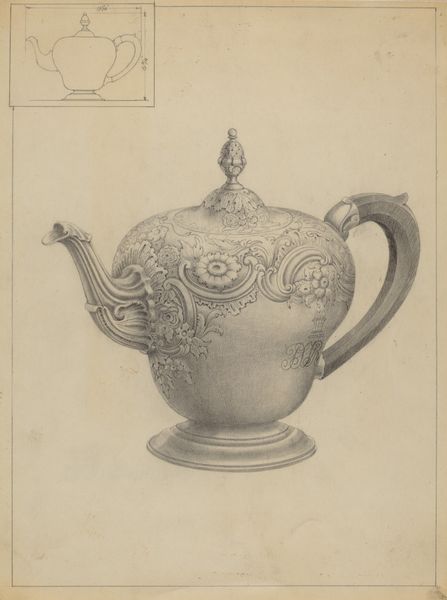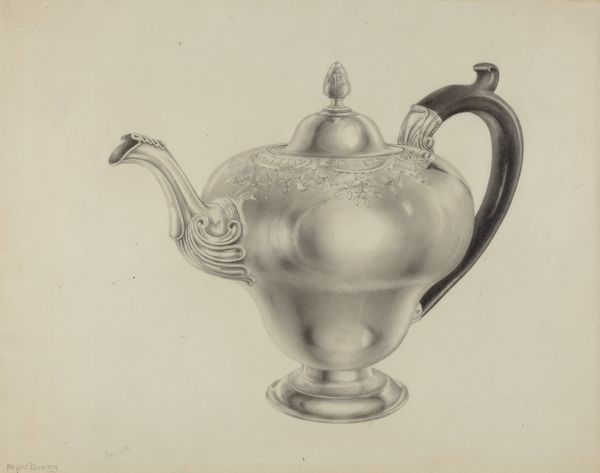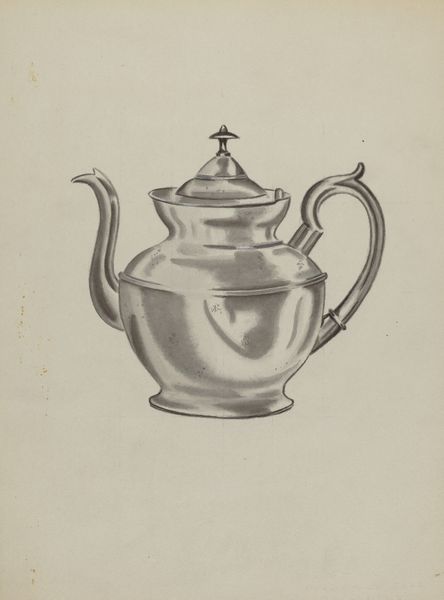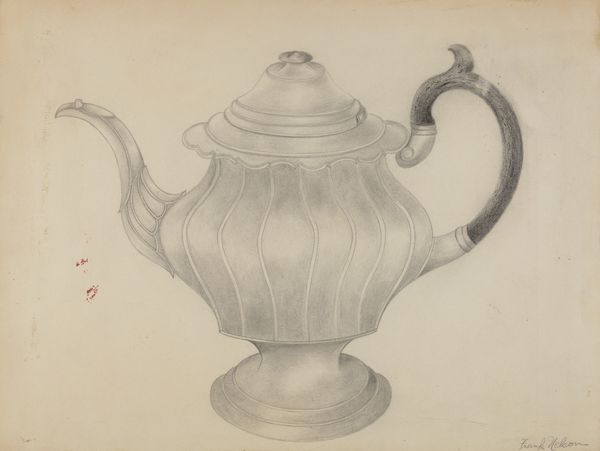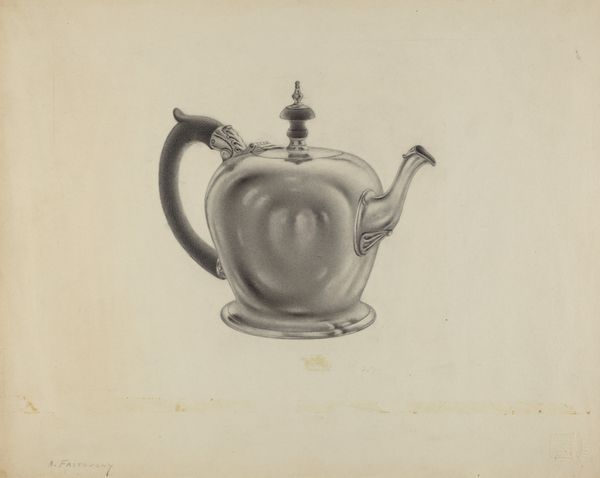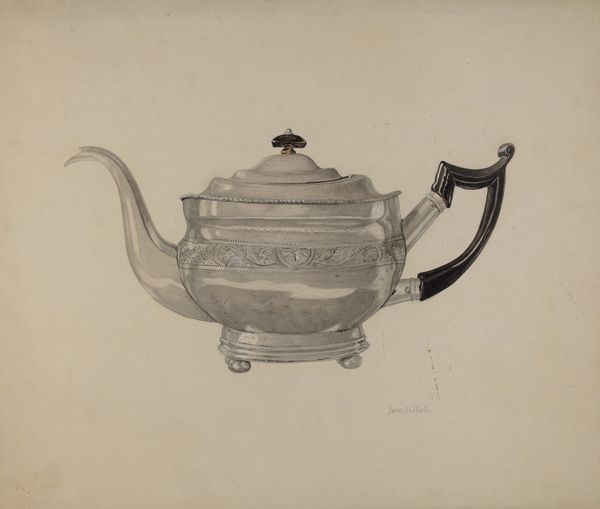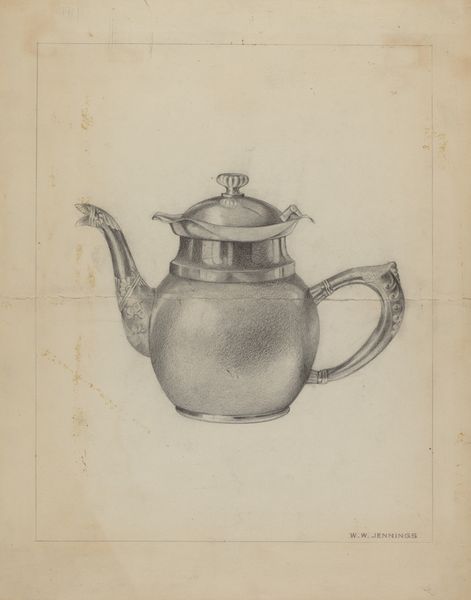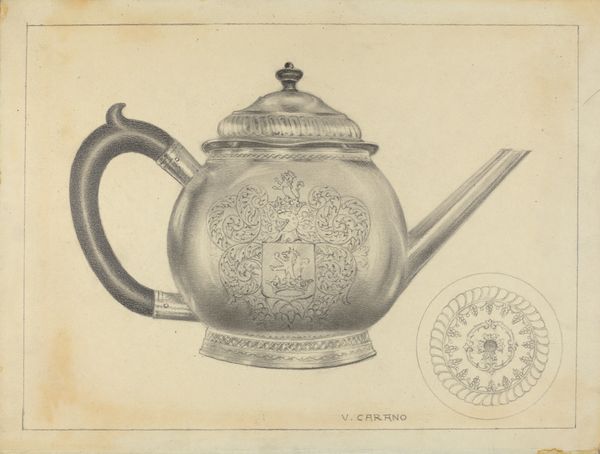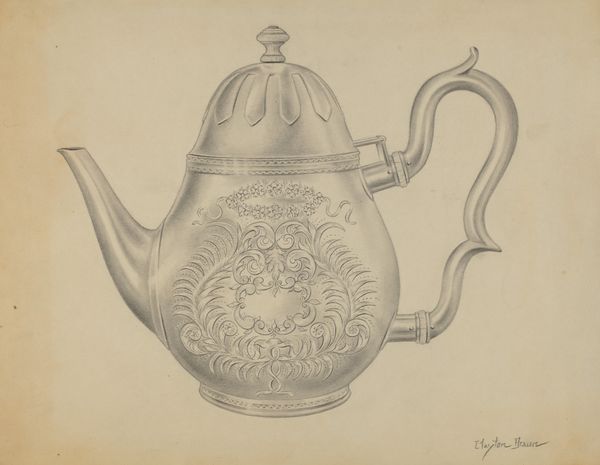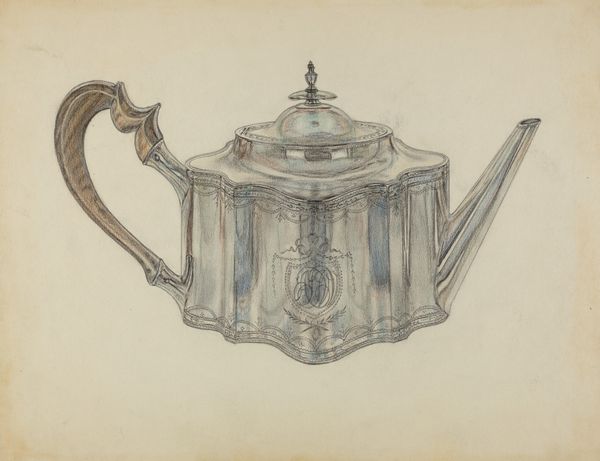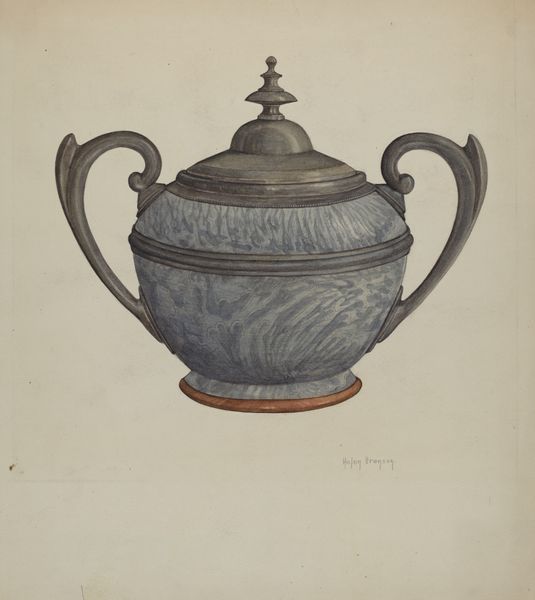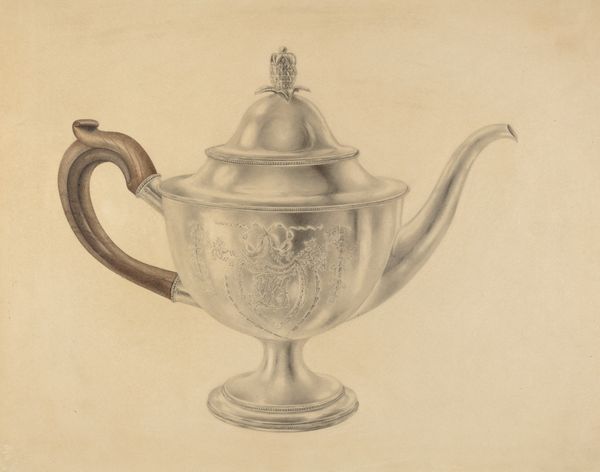
drawing, pencil
#
drawing
#
pencil drawing
#
pencil
#
realism
Dimensions: overall: 22.8 x 29.4 cm (9 x 11 9/16 in.) Original IAD Object: 5 5/8" high
Copyright: National Gallery of Art: CC0 1.0
Curator: Before us is a pencil drawing titled "Silver Teapot," created around 1936 by Vincent Carano. It showcases a detailed depiction of, well, a silver teapot. Editor: My initial reaction? The shading is exquisite. You can almost feel the cool smoothness of the metal despite it being rendered solely in pencil. There’s something wonderfully tactile about it. Curator: Indeed. Carano's technique beautifully captures the light reflecting off the teapot’s surface. It reminds us that objects like these often symbolized status and refinement, particularly in the 1930s, a time of both economic hardship and aspiration. Silverware signalled a degree of stability and belonging to a certain social class. Editor: It’s interesting how the ornate designs etched onto the teapot speak to the craft itself. Each swirl and flourish meticulously rendered in pencil. You can practically feel the artisan’s hand shaping the silver, the engraver painstakingly adding those delicate details. And how the artist attempts to mimic the artisanal process in this very detailed and painstaking drawing. Curator: Exactly. The teapot wasn’t merely functional; it was a symbol of social rituals. Tea ceremonies were often about cultivating an image of gentility, even as class structures were under considerable pressure at that time. Editor: There’s a slight tension here, though. The drawing, in its monochrome simplicity, presents a pared-down, almost humble interpretation of what would have been a glittering status symbol. Perhaps hinting at the changing attitudes toward material wealth? Curator: Possibly. Or even commenting on the function of art during hard times and the ability of the working class to obtain silverware. I would say there's an undeniable element of realism; capturing objects from daily life that are symbols of stability but also aspiration for the majority. Editor: Either way, it gives us a moment to consider the skill required not just in silver-smithing but also in replicating its likeness through drawing, transforming a three-dimensional object into a two-dimensional experience with an extraordinary level of tactile sensitivity. Curator: Well, thinking about the teapot as a tool for displaying the artistry, craft, and role-playing happening in 1930’s America, gives one a new perspective. Editor: And for me, looking at how much labor has been put into the silver and the painstaking labor of the drawing shifts it from just a luxurious artifact into a study on class aspirations.
Comments
No comments
Be the first to comment and join the conversation on the ultimate creative platform.
